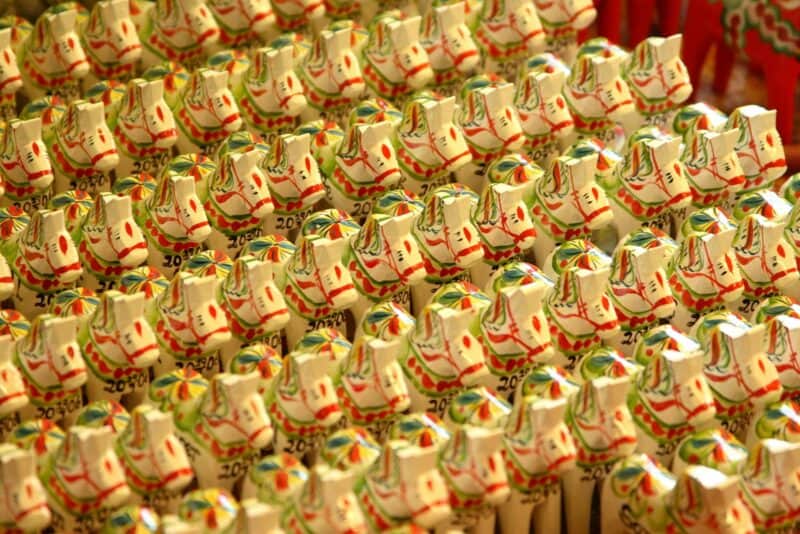Китай Продукты Gummy в Китае: Простое руководство для владельцев бизнеса

Вы подумываете об открытии собственного бизнеса по производству жевательных добавок или конфет, но не знаете, как наладить производство за рубежом? Мировой рынок жевательных конфет быстро растет, потому что людям нужны удобные и приятные продукты для здоровья. Китай находится в центре этого роста, являясь крупнейшим в мире производителем. Однако, чтобы найти свой путь в этом процессе, нужно не просто искать информацию в Интернете - вам нужны знания и четкий план.
Это руководство - не просто очередной пошаговый список. Это профессиональный справочник инсайдера, созданный на основе многолетнего реального опыта работы в отрасли. Мы проведем вас через весь процесс, от первой идеи до конечной поставки, и дадим вам знания для принятия разумных и выгодных решений. Наша цель - сделать процесс понятным и помочь вам построить успешный бренд с надежным партнером.
Почему стоит выбрать Китай?
Прежде чем узнать "как", важно понять "почему". Решение о производстве в Китае - это разумный деловой выбор, подкрепленный сильными преимуществами, которые трудно найти в других странах. Для брендов, стремящихся к эффективному развитию, китайская система предлагает уникальное сочетание преимуществ.
- Огромные масштабы и мощности: Производственная инфраструктура Китая не имеет себе равных. Согласно последним отраслевым данным, эта страна лидирует в мире по производству многих ключевых ингредиентов для конфет и медицинских добавок. Это означает, что фабрики могут работать как с небольшими тестовыми партиями для новых компаний, так и с огромными, многомиллионными партиями для известных мировых брендов, обеспечивая рост по мере расширения вашего бизнеса.
- Экономическая эффективность: Несмотря на рост стоимости рабочей силы, Китай сохраняет сильные конкурентные преимущества благодаря высокоэффективному балансу квалифицированных работников, обширной сети поставщиков сырья и развитой промышленной инфраструктуре. Общая стоимость продукции, произведенной в Китае, часто остается гораздо ниже, чем в западных странах, без ущерба для технологических возможностей.
- Передовые технологии и опыт: Представление о Китае как о низкотехнологичном производителе устарело. Сегодня ведущие производители располагают самыми современными предприятиями. Это особенно актуально для сектора функциональных и оздоровительных жевательных добавок, где точная дозировка, сложные рецептуры и специализированные технологии производства, такие как бескрахмальное осаждение, становятся стандартом.
- Полная цепочка поставок: В Китае существует глубоко взаимосвязанная цепочка поставок. Вся система - от поиска сырых активных ингредиентов и желирующих веществ до производства индивидуальной упаковки и управления глобальной логистикой - взаимосвязана. Такая интеграция позволяет сократить время выполнения заказа, минимизировать логистические проблемы и создать беспрепятственный путь от заводского цеха до вашего склада.
5-этапный путь производства
Изготовление жевательной резинки на заказ это многоступенчатое путешествие. Понимание каждого этапа важно для эффективного управления проектом и успешного результата. Мы разбили это на четкие пятиэтапные рамки, которые мы используем, чтобы вести наших партнеров от концепции до контейнера.
Этап 1: Проверка партнеров
Это самый важный этап вашего проекта. Вы не просто подбираете товар; вы выбираете долгосрочного партнера, чьи возможности и честность будут напрямую влиять на репутацию и успех вашего бренда. Чтобы найти действительно авторитетного производителя, необходимо выйти за рамки общих платформ для поиска поставщиков. Мы рекомендуем обратить внимание на отраслевые выставки (например, Vitafoods или CPHI), профессиональные сети и специализированных агентов по поиску поставщиков.
Как только вы составите список, необходимо провести тщательную проверку. Вот десять важнейших вопросов, которые мы советуем задавать каждому потенциальному клиенту.
- Каковы ваши основные сертификаты качества и безопасности? В качестве базового уровня ищите GMP, ISO 22000 и BRC.
- Можете ли вы предоставить анонимные тематические исследования или рекомендации от брендов на нашем целевом рынке (например, США, ЕС, Австралия)?
- Каково ваше стандартное минимальное количество заказа (MOQ), и есть ли возможность сделать первый пробный заказ?
- Опишите процесс исследований и разработки рецептур. Кто является ключевым персоналом и каков его опыт?
- Как обращаться с интеллектуальной собственностью (ИС) клиента и защищать ее, особенно если речь идет об уникальной или запатентованной формуле?
- Можете ли вы рассказать мне о вашем полном процессе контроля качества (QC), от поступления сырья до выпуска готовой продукции?
- Каковы ваши стандартные условия оплаты для новых клиентов? (например, 30% аванс, 70% перед отправкой).
- Можете ли вы справиться со сложными задачами по упаковке, такими как печать на заказ на пакетах, детские крышки или этикетки на нескольких языках?
- Каково ваше типичное время выполнения заказа на запуск нового продукта (с момента утверждения формулы) и последующих повторных заказов?
- Кто будет моим контактным лицом? Каков уровень владения английским языком и технических знаний?
Прозрачный и уверенный в себе партнер будет рад таким вопросам и предоставит подробные, поддающиеся проверке ответы. Нерешительность или расплывчатые ответы должны стать серьезным тревожным сигналом.

Этап 2: Создание формул и прототипов
Это творческая часть проекта, где ваше видение продукта превращается в реальный продукт. Успешная рецептура сочетает в себе эффективность, стабильность и потребительскую привлекательность. Процесс начинается с определения основных характеристик вашего жевательного средства.
- Активные ингредиенты: Является ли этот продукт добавкой к здоровью с определенными дозировками витаминов, минералов или растительных экстрактов? Или это чистая конфета? Характер активных веществ будет сильно влиять на рецептуру, поскольку некоторые ингредиенты могут влиять на вкус, текстуру и стабильность.
- Основа и желирующий агент: Этот выбор является основополагающим для идентичности жевательной резинки. Он определяет текстуру, соответствие диетическим требованиям (например, веганским, халяльным) и термостабильность.
- Сенсорный профиль: Сюда входят вкус, цвет, уровень сладости (Brix) и возможные кислые покрытия. Этими решениями руководствуется ваша целевая демографическая группа. Например, детские витамины будут иметь другой вкусовой профиль, чем изысканные жевательные резинки для взрослых.
Понимание мира желирующих агентов - ключевая часть этого этапа. Каждый агент обладает уникальными свойствами, и правильный выбор зависит исключительно от целей вашего продукта.
Таблица 1: Сравнение желирующих агентов
| Характеристика | Желатин (бычий/карасиный) | Пектин (на основе фруктов) | Каррагинан (на основе морских водорослей) |
| Источник | Животный коллаген | Цитрусовые корки, яблочные выжимки | Красные морские водоросли |
| Текстура | Жевательный, упругий (классический вкус жевательного мишки) | Более мягкий, короткий прикус (ощущение "желе"). | Твердый, хрупкий гель |
| Диета | Не веган, возможны халяльные/кошерные варианты | Веганский, халяльный, кошерный | Веганский, халяльный, кошерный |
| Температура плавления | Низкий (тает во рту, менее термостабилен) | Более высокая (более термостойкая при транспортировке) | Высокий |
| Лучшее для | Традиционные жевательные конфеты, добавки | Веганские/вегетарианские продукты, климат с высокими температурами | Специфическое применение веганского желе |
После того как формула определена на бумаге, начинается процесс создания прототипа. Обычно это включает в себя создание командой R&D небольших "настольных" образцов для вашей оценки. Это итеративный процесс. Вы можете пройти через несколько раундов корректировки вкуса, цвета или текстуры. Исходя из нашего опыта, мы даем один важный совет: никогда не утверждайте массовое производство, основываясь только на спецификации. Всегда настаивайте на получении и тестировании физических образцов. Вы должны сами одобрить окончательный внешний вид, ощущения, вкус и жевательные свойства прототипа, прежде чем давать зеленый свет на большую пробную партию или массовое производство.

Этап 3: Производство и контроль качества
После утверждения прототипа ваш проект переходит в серийное производство. Хотя технология может быть сложной, рабочий процесс следует логической последовательности:
- Смешивание: Все ингредиенты - активные вещества, желирующие агенты, подсластители, вода, красители и ароматизаторы - точно взвешиваются и смешиваются в больших промышленных чайниках с подогревом.
- Приготовление: Смесь готовится до определенной температуры и Brix (содержание сахара), чтобы обеспечить правильное формирование геля и активность воды для стабильности хранения.
- Осаждение: Горячая жидкость заливается в формы. Это могут быть традиционные формы крахмальные линии или современные силиконовые или металлические формы без крахмала.
- Охлаждение/отверждение: На сайте Жевательные резинки путешествуют по охлаждающим туннелям Затем они отдыхают в климатических камерах в течение 24-48 часов, чтобы полностью затвердеть и приобрести окончательную текстуру.
- Отделка: После застывания жевательные конфеты извлекаются из форм и подвергаются отделке, которая может включать в себя покрытие маслом для предотвращения прилипания или шлифовку смесью сахара и кислоты для придания кислого вкуса.
Параллельно с этим рабочим процессом идет самый важный: контроль качества. Уважающий себя производитель рассматривает контроль качества не как завершающий этап, а как непрерывный протокол, интегрированный в каждый этап.
- IQC (входной контроль качества): Прежде чем сырье попадает на производственный участок, оно проходит карантин и тестирование. Это включает в себя проверку идентичности и потенции активных ингредиентов, проверку сертификатов анализа и тестирование на наличие загрязняющих веществ.
- IPQC (внутрипроцессный контроль качества): В процессе производства технические специалисты постоянно контролируют и регистрируют критические контрольные точки. Это включает в себя проверку температуры смеси, измерение уровня pH и проверку содержания Brix, чтобы гарантировать постоянство от партии к партии.
- FQC (окончательный контроль качества): После того как партия китайских жевательных резинок готова и затвердела, репрезентативные образцы отбираются для проведения полного комплекса испытаний. Эта комплексная проверка включает в себя:
- Анализ: Проверка того, что дозировка каждого активного ингредиента находится в заданном диапазоне.
- Микробиология: Проверка на наличие любых потенциальных загрязняющих веществ, таких как дрожжи, плесень, кишечная палочка и сальмонелла, для обеспечения безопасности.
- Физические атрибуты: Проверка соответствия веса, формы, размера и цвета утвержденному стандарту.
- Сенсорная комиссия: Внутренняя команда пробует и оценивает партию, чтобы убедиться, что вкус и текстура соответствуют утвержденному прототипу.
- Проверка в лаборатории третьей стороны: Для полной уверенности мы всегда рекомендуем отправлять образцы готовой партии в независимую аккредитованную лабораторию (например, Eurofins или SGS). Это обеспечивает беспристрастное подтверждение потенции и безопасности продукта третьей стороной, что является важным документом как для соблюдения нормативных требований, так и для маркетинга.
Этап 4: Индивидуальная упаковка
Упаковка - это гораздо больше, чем просто контейнер; это критически важный компонент, который защищает ваш продукт, сообщает о вашем бренде и обеспечивает соответствие нормативным требованиям. Ваш партнер-производитель должен обладать достаточным опытом, чтобы подсказать вам различные варианты.
Первый слой защиты вашего продукта - первичная упаковка. Наиболее распространенные варианты включают:
- Бутылки (PET/HDPE): Это промышленный стандарт для жевательных добавок. Они обладают отличными барьерными свойствами против влаги и кислорода, легко маркируются, а также имеют различные виды укупорки, включая крышки, устойчивые к воздействию детей.
- Пакеты (пакеты-стойки): Гибкий и современный вариант, пакеты предлагают большой холст для брендинга, имеют небольшой вес (что снижает стоимость доставки) и могут быть изготовлены с использованием высокопрочных пленок и повторно запечатываемых молний.
- Блистерные упаковки: Блистерные упаковки, применяемые в фармацевтике, обеспечивают высочайший уровень защиты, запечатывая каждую жевательную резинку по отдельности. Это обеспечивает точную дозировку и защищает продукт от влаги до момента употребления.
Вторичная упаковка включает в себя готовую к продаже коробку, в которой хранится бутылка или пакет, а также более крупные картонные коробки и мастер-картоны, используемые для транспортировки.
На протяжении всего этого процесса ключевую роль играет соблюдение требований. Ваша упаковка и маркировка должны соответствовать специфическим требованиям вашего целевого рынка. Например, продукция, продаваемая в США, должна иметь соответствующую требованиям FDA панель "Факты о добавках" или "Факты о питании", указание количества нетто и точный список ингредиентов. Ваш партнер-производитель должен иметь опыт работы с этими международными требованиями, чтобы избежать дорогостоящих ошибок и таможенных задержек.

Этап 5: Логистика и доставка
Теперь ваши жевательные конфеты произведены, протестированы и упакованы. Последний шаг - доставка их с фабрики в Китае на ваш склад. Этот процесс регулируется протоколами международной торговли и логистики, которые поначалу могут показаться непосильными.
Ключевым понятием, которое необходимо понять, являются Инкотермс (международные коммерческие термины). Эти термины определяют обязанности продавца (производителя) и покупателя (вас). Наиболее распространены два из них:
- EXW (Ex Works): Вы отвечаете за получение товара от дверей завода. Вы занимаетесь всеми экспортными процедурами, доставкой и оформлением импорта.
- FOB (Free On Board): Производитель отвечает за доставку товара в указанный порт в Китае и его таможенное оформление для экспорта. Вы берете на себя ответственность после погрузки товара на судно.
Далее необходимо выбрать способ транспортировки:
- Морские грузоперевозки: Наиболее экономичный вариант для больших объемов. Время транспортировки больше (обычно 30-40 дней до Северной Америки или Европы), но стоимость доставки каждой единицы товара значительно ниже.
- Авиаперевозки: Чрезвычайно быстрая (5-10 дней), но и значительно более дорогая доставка. Обычно используется для срочных отправлений, дорогостоящих товаров или первых небольших партий.
Если вы не являетесь опытным импортером, мы настоятельно рекомендуем не заниматься этим процессом самостоятельно. Профессиональный экспедитор - незаменимый партнер. Они выполнят все сложные действия, включая бронирование груза, таможенное оформление как в Китае, так и в вашей стране, уплату пошлин и налогов от вашего имени, а также организуют окончательную доставку до вашей двери.

Глубокий взгляд на затраты
Чтобы создать жизнеспособный бизнес-план, вы должны понимать истинную стоимость вашего продукта. Цена за единицу продукции, указанная производителем, - это только начало. Прозрачный партнер поможет вам понять всю структуру затрат.
Удельную стоимость жевательной резинки можно разделить на несколько ключевых компонентов. Хотя точное процентное соотношение зависит от сложности формулы и упаковки, типичная разбивка дает ценную информацию.
Таблица 2: Пример разбивки себестоимости гумми на единицу продукции (пример)
| Компонент затрат | Описание | Оценочная стоимость % от общей стоимости |
| Сырьевые материалы | Активные ингредиенты, желирующие вещества, подсластители, ароматизаторы, красители. | 40-60% |
| Производство | Труд, энергия, амортизация оборудования, накладные расходы. | 15-25% |
| Первичная упаковка | Бутылка/пакет, крышка, вкладыш, этикетка. | 10-20% |
| Контроль качества и тестирование | Собственные и сторонние лабораторные испытания. | 3-5% |
| Производитель Margin | Прибыль завода. | 10-15% |
Помимо стоимости единицы продукции, которую вы платите за каждый заказ, существует несколько единовременных или "скрытых" расходов, которые должны быть включены в ваш первоначальный бюджет проекта. Их игнорирование - распространенная и дорогостоящая ошибка новичков.
- Разработка пресс-формы: Если ваш гумми имеет уникальную, нестандартную форму, для него потребуется индивидуальный набор производственных форм. В зависимости от сложности и материала, это единовременные инвестиции, которые могут составлять от $2,000 до $5,000.
- Плата за разработку продукта (PDF): Многие производители взимают символическую плату, чтобы покрыть затраты времени на исследования и материалы, используемые для создания первоначальных прототипов. Иногда эта плата отменяется или возвращается, если вы выполняете крупный производственный заказ.
- Сторонние лабораторные испытания: Хотя ваш производитель проводит FQC, вы всегда должны выделять средства на проведение собственных независимых лабораторных испытаний первой производственной партии. Это обеспечивает максимальное душевное спокойствие и является важной частью вашей собственной должной осмотрительности.
- Доставка, пошлины и налоги: Эти расходы никогда не включаются в цену EXW или FOB. В зависимости от стоимости вашего продукта и тарифных ставок вашей страны они могут значительно увеличить общую стоимость доставки до 15-30%. Всегда получайте подробное предложение от экспедитора на ранней стадии процесса.
Ключи к успешному партнерству
Успешные производственные отношения строятся на фундаменте доверия, прозрачности и общей приверженности качеству. На мировом рынке эта приверженность подтверждается сертификатами. Это не просто логотипы на сайте; это доказательство того, что производитель следует строгим международным стандартам безопасности и контроля процессов.
Не все фабрики созданы равными. Правильные сертификаты - это обязательный фильтр, который вы должны использовать при проверке партнеров. Они гарантируют, что ваш продукт будет безопасным, соответствующим требованиям и будет принят крупными розничными сетями и взыскательными потребителями.

Таблица 3: Основные сертификаты для китайского производителя жевательных резинок
| Сертификация | Что это значит | Почему это важно для вас |
| GMP (надлежащая производственная практика) | Система, обеспечивающая постоянное производство и контроль продукции в соответствии со стандартами качества. Часто это cGMP для соответствия требованиям FDA. | Абсолютное минимальное требование. Обеспечивает базовую гигиену, контроль процесса и прослеживаемость. |
| ISO 22000 | Международный стандарт безопасности пищевых продуктов системы управления. Он сочетает в себе принципы ХАССП и программы предварительной подготовки. | Более высокий уровень управления безопасностью пищевых продуктов по сравнению с базовой GMP. Демонстрирует сложный подход к предотвращению рисков. |
| BRCGS (Глобальные стандарты соответствия репутации бренда) | Ведущая мировая стандарт безопасности пищевых продуктовчасто требуется крупным розничным сетям в Великобритании, Европе и Северной Америке. | Золотой стандарт. Если вы планируете продавать продукцию крупным розничным сетям, наличие завода, сертифицированного BRC, является огромным преимуществом. |
| Регистрация FDA | Требование для любого предприятия, которое производит, обрабатывает, упаковывает или хранит продукты питания, предназначенные для потребления в Соединенных Штатах. | Необходим для выхода на рынок США. Производитель должен быть зарегистрирован в FDA. |
Когда вы знакомитесь с потенциальным партнером, попросите показать вам его текущие сертификационные документы. Гордый, высококачественный производитель с готовностью предоставит их. Такая тщательная проверка защитит ваши инвестиции и будущее вашего бренда.
Ваш партнер в достижении успеха
Производство китайских жевательных резинок на заказ - сложный, но очень полезный процесс. Как мы уже подробно рассказывали, это путешествие, которое можно пройти гладко и успешно, если следовать структурированному, информированному подходу. От первоначальной концепции до конечной поставки - каждый этап дает возможность повысить качество и ценность вашего бренда.

Давайте вспомним основные принципы успеха. Во-первых, самое важное решение, которое вам предстоит принять, - это выбор партнера-производителя; тщательно проверьте его. Во-вторых, контроль качества - это не событие, а непрерывный процесс, который должен быть встроен в каждый этап, от поступления сырья до тестирования конечной партии. Наконец, понимание полной структуры затрат, помимо простой цены за единицу продукции, является ключом к построению прибыльного и устойчивого бизнеса.
Мировой спрос на инновационные продукты gummy продолжает расти, и при наличии необходимых знаний и правильного партнера-производителя Китай предлагает непревзойденную платформу для инноваций, масштаба и успеха. Это руководство - ваш первый шаг на этом пути.

Справочные ссылки:
- FDA - Надлежащая производственная практика (GMP) для диетических добавок https://www.fda.gov/
- ISO 22000 - Системы менеджмента безопасности пищевых продуктов https://www.iso.org/
- Википедия - Диетическая добавка https://en.wikipedia.org/wiki/Dietary_supplement
- Институт пищевых технологов (IFT) https://www.ift.org/
- BRCGS - глобальные стандарты безопасности пищевых продуктов https://www.brcgs.com/
- Ассоциация натуральных продуктов (NPA) - сертификация GMP https://www.npanational.org/
- ScienceDirect - Научные исследования в области пищевых продуктов и нутрицевтиков https://www.sciencedirect.com/
- PubMed Central - Исследования производства диетических добавок https://pmc.ncbi.nlm.nih.gov/
- Ассоциация потребительских товаров для здоровья (CHPA) https://www.chpa.org/
- ResearchGate - Исследовательские работы по пищевому производству https://www.researchgate.net/






